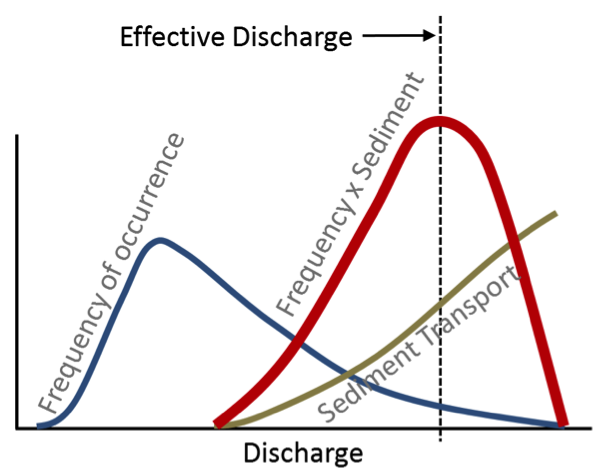Sizes of a River Channel
River channels are self-formed. Typically they are only partially filled, the water level is well below the tops of the banks. Sometimes, they are overfilled and water spills out onto the floodplain. These simple observations lead to the fundamental question, ‘what sets the size of a river channel?’ Figure 30 conceptually illustrates the rationale supporting the empirical finding that an ‘effective discharge’, which occurs frequently enough and has sufficient power to do work, ultimately dictates the size of the channel. Specifically, the brown curve illustrates that the frequency distribution of discharge in a river is typically right (positively) skewed, meaning that relatively low discharges are quite common and increasingly higher discharges occur with diminishing frequency. There is some discharge below which sediment does not move on the river bed because there is insufficient power to move the sand or gravel, as indicated by the light orange line starting at some moderate discharge and increasing in a non-linear manner at progressively higher discharge. Multiplying the brown and light orange lines together yields the darker orange line, which has a peak at some relatively high discharge value. This ‘effective discharge’ tends to occur when the river is approximately full up to its naturally formed banks. Even very large floods, which greatly exceed the capacity of the channel, do not necessarily add a proportionate amount of power to the channel because much of the additional water (and therefore the energy to transport sediment) is dissipated on the adjacent floodplain.
As changes in climate alter precipitation patterns or as land and water management modulates the proportion of precipitation that becomes streamflow, the frequency curve in Figure 30 may change and thus change the effective discharge as well as the geometry of the channel. In this way, rivers are dynamic features in the landscape, growing bigger when more water is flowing through the landscape and smaller during extended drier periods.

